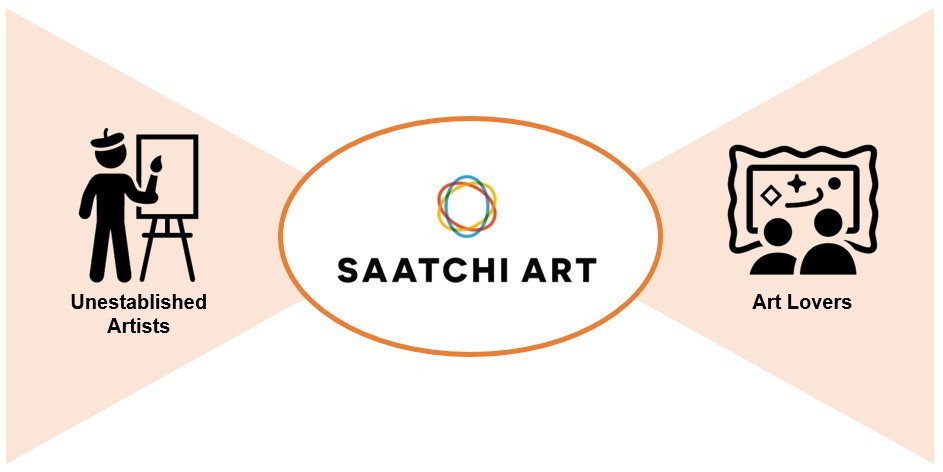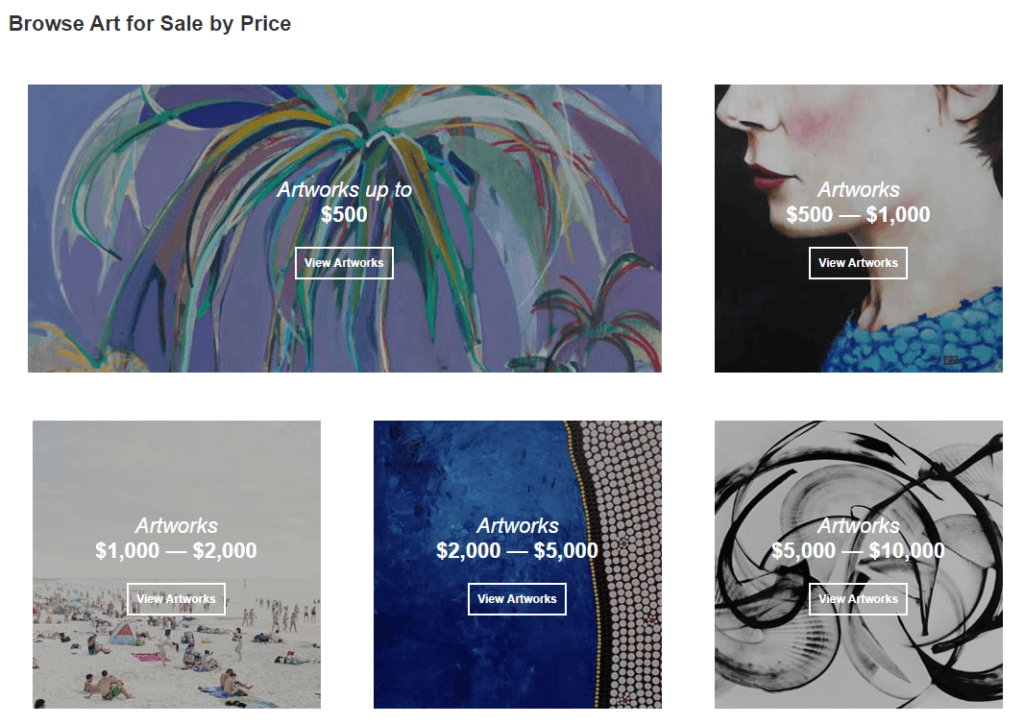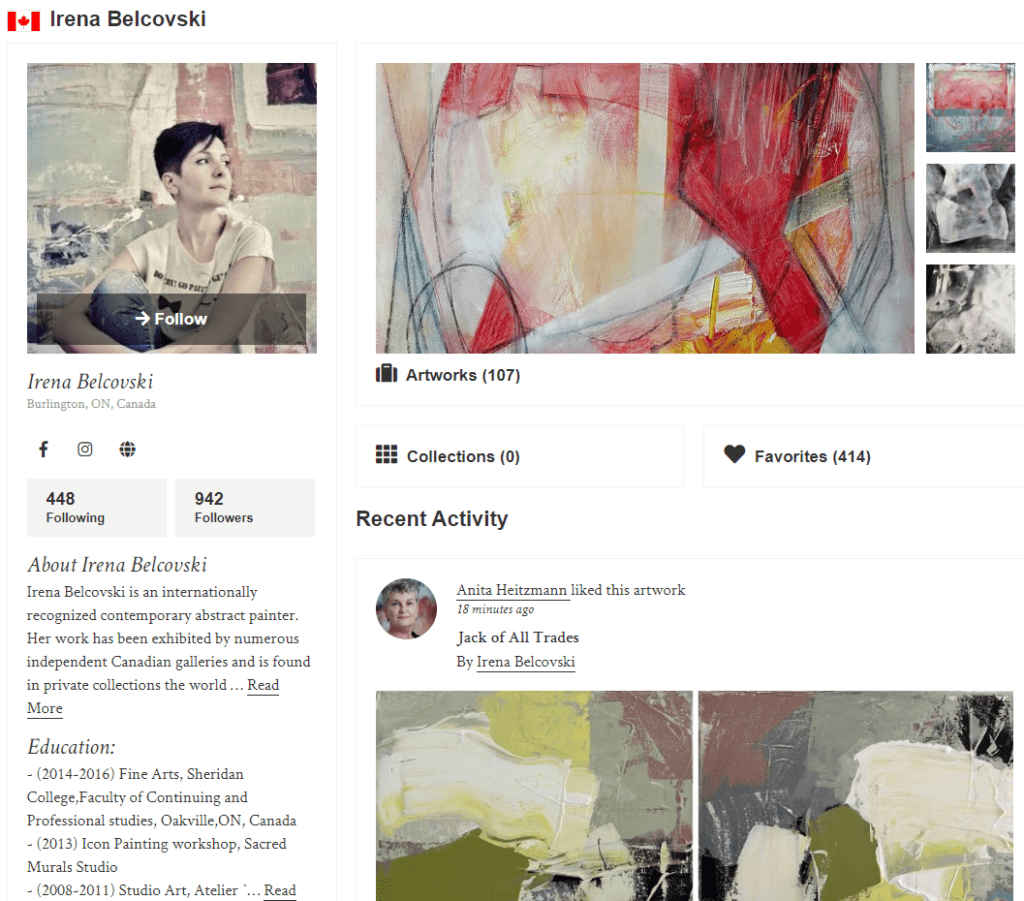Saatchi Art: Equal Opportunity to Sell and Own Original Art

Saatchi Art is a platform that connects up-and-coming artists to users interested in owning original artwork. This democratizing disruption of the art industry has allowed Saatchi Art to create value for both artists and art lovers.
Saatchi Company Overview
Saatchi Art is a platform that connects local artists to users interested in artwork. The platform creates value because it allows up-and-coming artists to be discovered. It also allows users to get access to original artwork without having to go through the exclusive process of contacting and visiting an art gallery (see Exhibit 1).
Exhibit 1 – The Saatchi Art business model connects unestablished artists to the art loving community online.
Users: Art Lovers
The interface allows users to filter by price ($50 – $100,000) or genre (modern, landscape, etc.) thereby catering to a large market of art enthusiasts across taste and purchasing power. Their large number of artworks and seamless user interface is one of their competitive advantages as the current market leader. The user base is among the largest of all its competition with over 500,000 pieces of art from over 60,000 artists. Users have access to paintings and artists from over 100 countries. See Exhibit 2 for an overview of the user experience and Saatchi user interface (UI).
Exhibit 2 – Sample of the user interface for searching and filtering through original artwork based on preferences.
Professionals: Unestablished Artists
Saatchi Art also prioritizes its interface for artists to display their artwork, collections and their story. This lets artists form deep connections and followings with the users of Saatchi Art which has over 1.6 million monthly visits to the Saatchi Art web page and application[i]
Exhibit 3 – Artist view allows users to follow their favorite artists, see their collections, and view the artist biography.
Platform: Saatchi Art
Saatchi Art captures value by taking a commission from the artists. The current commission that Saatchi takes from artists is 35%. This is slightly higher than most of their competition, but to do the value proposition of their strong user base and seamless web page and app experience this continues to draw in more artists. Saatchi’s competitive advantage is its scale and its emphasis on supporting artists. See Exhibit 4 below for a promotional video that emphasizes original artwork.
Exhibit 4 – YouTube “I am Original” ad for Saatchi Art.
Other Art Platforms
There are over a dozen websites that offer services to connect artists to buyers[ii]. There are several other competitors in the space that have either failed or carved out a new user base to connect. One platform, Vango, had a very similar model to Saatchi Art and only a 30% commission from artists. However, Vango had issues with its user experience and several noted technological issues. In 2019, Vango went out of business.
Artsy is another competitor that has approached the platform from a different angle[iii]. They are looking for high end artists and connecting them to high end galleries for auction style bidding. This is targeting a different market and connecting two different groups of users, so there is a possibility that both Saatchi Art and Artsy can co-exist without stealing market share.
With a fragmented competition, and Saatchi Art clearly in the lead, it is likely Saatchi they will continue to grow their market for both users and artists.
Can Saatchi Continue to Lead the Pack?
Network Effects
The network effects in this platform are strong. Artists depend on a large and engaged user base that will frequently interact with their personal page for new artwork and, more importantly, are willing to make a purchase. Art loving users are depending on high quality artists. Since art styles and taste can vary diversity is also crucial. For moderns artists to be interested in joining Saatchi they want to have modern art enthusiasts. Diversity of the network is also highlighted by varying countries, price points, and representation and featuring of different genders.
Disintermediation
There is a small threat of disintermediation. As an artist builds a strong following, they may move to art galleries or specifically make artwork for their top clients. However, a platform like Saatchi might welcome this kind of disintermediation. This legitimizes their business model as a way for budding artists to solidify their business and have a break out moment in their profession.
Another benefit of the Saatchi platform is the data the artists collection on willingness to pay. Artists can use the platform to experiment with pricing their art which can be very difficult to ascertain especially for new artists. This would be more difficult for artists to do if they were to venture out on their own.
Multi-Homing
Multi-homing is high for Saatchi. In fact, they embrace multi-homing since one of their advertised benefits to artists is a non-exclusivity clause. By having non-exclusivity agreements, artists are able to use other platforms or galleries to sell their art. This can benefit Saatchi for two reasons. Firstly, having their artists on multiple platforms will make their artists more famous. This will benefit Saatchi as long as they continue to be the leader in the market. This play also brands Saatchi as an artist centric platform which may help them build out their draw for more artists.
Conclusion
Saatchi has helped to democratize the process of purchasing original art[iv]. A once pretentious and exclusive process is now available to people with varying backgrounds and wallet sizes. As the market leader in the industry, Saatchi has successfully connected art and technology with strong network effects and embracing the possibility for multi-homing and disintermediation. Due to these circumstances, Saatchi should be well suited to hold on to the lead in the art/tech market.
[i] Saatchi Art Website. “Why Sell on Saatchi Art?” Retrieved from: https://www.saatchiart.com/whysell
[ii] Goldstein, Caroline. “So You Want to Sell Your Art?” Retrieved from: https://news.artnet.com/art-world/sell-your-art-without-a-gallery-1322180
[iii] Artsy Company Website. Retrieved from: https://www.artsy.net/
[iv] Wilson, Rebecca. “How Radical Transparency Has Changed the Way People Buy Art” Retrieved From: https://canvas.saatchiart.com/culture/how-radical-transparency-has-changed-the-way-people-buy-art?utm_source=linkedin&utm_medium=social&utm_campaign=2258






Thanks for a great article! I wonder what the distribution of prices are on the platform for various artworks sold remotely. I imagine that high-end art would likely be purchased in-person or as an investment and evaluated by art professionals on the buy side — going through traditional art houses or auction processes. For lower-end art, Etsy seems to have a fairly robust offering as well, which further removes the high-volume, low value works from contention. Saatchi seems caught in the middle, so the value-add services specific to its art offerings that others cannot replicate at the same scale for the same low price seem critical to its growth.
Furthermore, you mention the risk of disintermediation. It seems that the calculus of cost of artist acquisition vs take on each sale is critical here as a buyer may quickly connect directly with the artist and only make one or two purchases through the platform. This has significant implications for fee structures and business model design for the platform to ensure long-term sustainability.